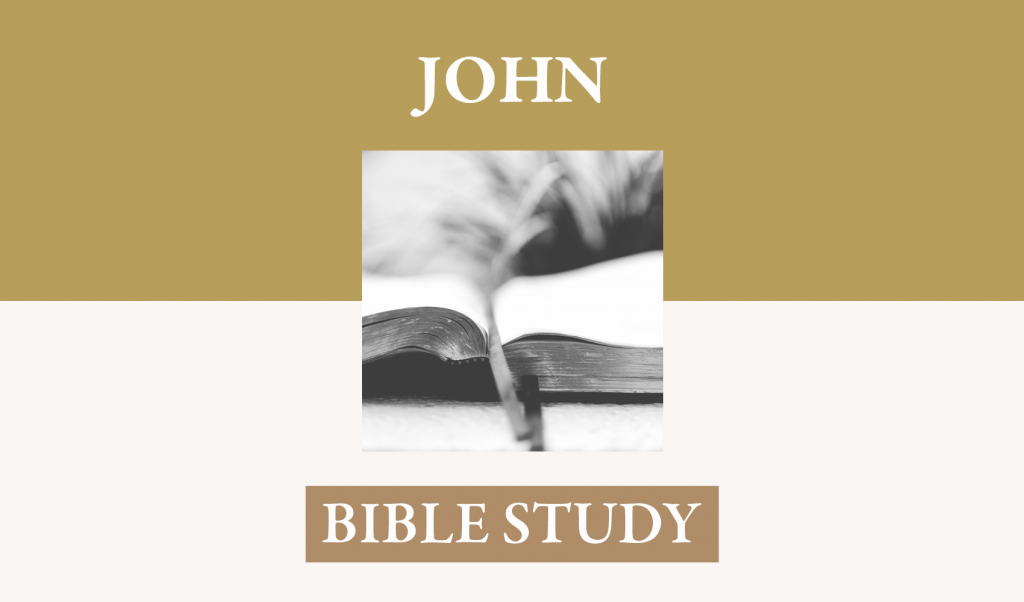Having prayed for his own, and being assured that he would lose none of them, Jesus now moves toward the rapidly developing events that could make them fall and would certainly end in his death. But he has already shown his control of all these events and in this chapter he continues to make sure that the events unfold as he has determined. Leon Morris comments that John “stresses the divine overruling.”
I. Jesus Gives Himself up to the Cup of God’s wrath and so to His pursuers
A. This passage of Jesus from the house in which he had taken the Supper (134:1ff), given these discourses (14-16) and offered his priestly prayer (17), over the
1. Over this brook and through this valley David and all those that followed him crossed when Absalom pursued him. 2 Samuel 15:23. He did this to preserve his life, the integrity of the Kingdom, and maintain the proper succession to the throne. When Jesus crossed this brook, he went into a garden to face the reality of the coming wrath of his Father and make his culminating submission to his sacrificial death.
2. Josiah destroyed the worship paraphernalia of Baal in the fields of Kidron and at the brook. (2 Kings 23:4, 6). Jesus crossed the brook to secure the final sacrifice that would put an end to all the rhythm of sacrifices and secure a people that would worship in Spirit and in truth.
3. This stream was connected to a canal that came from the temple into which the blood and offal of the sacrificial victims was thrown. It was called Kidron because of its dark color, probably, and at the time Jesus crossed it would have been red with the blood of the sacrifices.
4. The garden into which Jesus entered is called
B. Judas knew that Jesus would go there, for “Jesus often met there with his disciples.” Luke said that going there with his disciples was “his custom.” Not only did Judas know that Jesus would be there, isolated, away from the crowds, and so easily arrested and taken into custody, but Jesus knew that Judas would come there to give him up to the authorities. Jesus, knowing that Judas was in the business of betrayal does not try to conceal himself, but makes himself vulnerable. He is in control of the entire event.
C. The events of Jesus’ time of prayer are passed over by John, and he introduces events that the synoptics do not include. The resolution of Jesus’ time of prayer in
1. Jesus emerges from the time of prayer in
2. Because of the alarm raised by the Jewish accusations of Jesus’ political aims, a “great multitude” or “great crowd” also called “crowds” (Matthew 26:47, 55) arrived at the garden spot, known well by Judas. This included a large number of Jewish officials and probably 500 Roman soldiers. Their leader of the Roman group is called a “chiliarch” which mean the head of a thousand. A “band” of this thousand probably is half the corps. In light of the highly intensified rumors concerning Jesus it is not at all fanciful to conceive of 500 armed Roman soldiers accompanying this group of Jewish accusers. Several arrest attempts had failed. They were determined this one would not (John7:30, 32, 44-47; 8:20; 11:47-53, 57
3. There are two possible scenarios in the sequence between the kiss of Judas and the confrontation engineered by Jesus.
Judas does not act immediately, for, along with the others, he could have been surprised at the openness of Jesus and how quickly he took control of the situation, and kissed him as the “sign” only after the second time that Jesus said “I am” the one you seek. Perhaps it took a while for a man with an increasingly accusing conscience to get the nerve to follow through with his betrayal. Lending credibility to this construction is the word of Mark, “And when he was come, straightway he came to him . . .”
It is also possible, however, and the reconstruction of sequence and psychology would not be incompatible with an immediate approach of Judas to Jesus (to get it over with) followed by a brief but private interaction between Jesus and his former treasurer. Verse three would imply that Judas’s arrival immediately resulted in the manifestation of false affection. The words of Verse 5, “Who betrayed him,” could indicate that the kiss already has occurred and Judas has stepped back. Jesus immediately continued with the series of questions to the great crowd, who, in the vast majority, may have been oblivious to the interaction between Jesus and Judas. Judas sunk back to the crowd after the painful experience of gross disloyalty (verse 5).
4. John is interested in the way that Jesus manifests his control of the entire scene. Note that John inserts Jesus’ full consciousness of the meaning of all this and how it would play out (“knowing all that would happen to him”). This has been a consistent theme (cf. 12:27-33; 13:1-4) Jesus also sought to arm his disciples with some elements of this knowledge beforehand, for it gives assurance and a sense of purpose even in the time of trouble and opposition (16:1-4)
Instead of having to seek him out, as they were prepared to do conceiving of him as a fugitive and a plotter, with lanterns and torches, Jesus stands in the open and asks them whom they seek (5) Having the answer so quickly and unevasively, they fell back (6) Jesus’ use of the “I am” is a major part of the self-consciousness of Jesus that John consistently highlights.
Their falling back could be as a defensive posture, preparing for an immediate attack from the followers of Jesus, being completely ignorant of the size of his contingent or of his intent in this bold confrontation. It could also be a manifestation of the power of holiness, moral purity, absolute confidence, and utter transparency. Only a shred of the moral glory of Christ is enough to cause sinners to quake. If this is the cause of the retreat, it is an infinitesimal part of what will occur when 2 Thessalonians 1:8-10 and Revelation 6:15-17 come to pass.
D. Verses 7, 8 – Now That Jesus has been identified twice possibly, first by the sign and then by his self-identification, they still are flummoxed; so he asked again, who they seek. A part of his strategy is to have them state with clarity that they have no issue with anyone other than he.
1. They again state their mission, and Jesus again gives the clear statement of identity with all of its messianic overtones—“I told you, I am (ego eimi).”
2. Now that it is clear who he is, and that it he alone they seek, Jesus ascertains the safety of his disciples (“So, since you seek me, let these men go.”) Their physical deliverance at this juncture was a sign of the promise that he would also preserve them spiritually and would lose none of them. John makes sure the reader does not lose this connection (9). They would come to see the glory that he had with the Father before the world was.
3. Again, in the reconstruction of these events, it is possible that at this point Judas, finally seals the certainty of Jesus’ self-disclosure by the sign of a kiss.
E. verse 10, 11 – Now surmising what was taking place, the disciples asked if they should take action (Luke 22:49), and, not waiting for an answer, Peter swung wildly (either back-handed or left-handed) and managed to cut off the ear of the High Priest’s servant, perhaps striking a glancing blow on a ducking man, a man than John knew as Malchus.” One can imagine that in light of the tenseness of the entire scene, the captors’ expectation that they would have to fight, Peter’s action greatly compromised their safety. Jesus, however, in full control, calms Peter down, lays claim to the cup of suffering in this his hour of glory. He quickly put an end to the moment of violence with several words to his disciples (Luke 22:51; Matthew 26:52-54). In addition his immediate restoration of Malchus’s ear (Luke 22:51), precluded any reason for retaliation. So again, Jesus demonstrated his control of the entire situation.
II. Two Men on Trial
A. Jesus is taken to the residence of the high priest, Caiphas. Annas, who, in light of the events, wanted to be present and to see the one that had so often escaped their murderous intentions now bound before him. Annas had been high priest, and was thus referred to as “high priest” in Acts 4:6, and was the father in law of the present high priest. The narrative is such that we must conclude that Jesus was taken to the house of Caiaphas for it continually emphasizes the high priest and the text clearly sets forth Caiaphas as the high priest with whom Jesus has to do. Verse 14 even refers to the event in John 11:49-53, where the high priest, Caiaphas had said, “You know nothing at all. Nor do you understand that it is better for you that one man should die for the people, not that the whole nation should perish.”
B. Verses 15-18 – Peter, in the meantime, out of loyalty to Christ, but confused and uncertain about what was to happen, followed Jesus.
1. He was determined to lay down his life for Christ, had made a valiant attempt to protect Christ by force of arms. To Peter’s claim of ultimate loyalty, Jesus responded with a prediction of denial; to Peter’s attempt at protection, Jesus had responded with a reprimand and a lesson.
2. He entered the courtyard of the high priest by the influence of another unnamed disciple. This could have been Nicodemus or Joseph of Arimathea. Some have suggested that this was John, but John would not have been on friendly terms with the high priest or of such influence as to speak for one like Peter to gain him entrance.
3. The question the servant girl asked is a bit perplexing. On what basis would she have asked if Peter were “also” one of this man’s disciples? Had the unnamed disciple identified himself as such in giving a reason as to why he would attend this event?
4. Peter, nevertheless, when asked the question, fell away from all his bold resolution to die for Christ and denied that he was a disciple even to this servant, a portress. He had not planned on this denial, had well-formed intentions, but they were based based on an overestimation of his own courage and a misperception of the purpose of Jesus’ ministry. Judas had planned his betrayal and carried it through flawlessly; Peter was blind-sided by his own sense of self-preservation.
5. He seems to be unaware of the depth of the deception and the danger of this denial (See 2 Timothy 2:12). He fell easily into the flow of the suggestion contained in the question: “You are not . . . I am not.”
6. He fell just as easily into the posture of those that had arrested Jesus and brought him bound to the subjection to falsehood, insult, and humiliation. They built a fire and were standing and warming themselves. What a sad irony, this one that had moments before swung his sword in defiance of their mission now, like them, “was with them, standing and warming himself.” Sin is subtle and sly and seeps into our very bones through an appeal to self-preservation. Jesus’ trial has provided a secondary stage on which the trial of Peter is playing. We will see how this is prelude to a precipitous fall by Peter—a great slam to his (unwarranted) self-confidence, and lays the foundation of humiliation from which he will be reconstructed as a man dependent on grace and revelation.
C. Verses 19-24 – Jesus continues to maintain his innocence
1. The High Priest [Annas or Caiphas] asked about Jesus’ disciples and also his teaching. From the beginning of this entire incident Jesus has worked to keep his disciples clear of it and he does so here. He makes himself the focus of the interrogation and simply ignores the question about the disciples. The teaching is his and his alone; the mission is understood only by him and to involve his disciples in any way would be irrelevant, for they, at the present, don’t have a clue as to what is transpiring. They thought that faithfulness meant fighting, but that clearly is not what Jesus intended. (Matthew 26:52-54) They haven’t yet grasped that faithfulness means dying.
2. Here Jesus points to the irregularity of the procedure; for they should have witnesses and have no warrant to ask that he bear testimony against himself. Witnesses, however, would not be able to bring any charge that is not already a matter of public knowledge. He spoke “openly to the world.” When he taught his disciples privately, he said nothing in substance that was not already said in principle in public. The purity and sinlessness of Jesus has been one of the themes to which John has pointed. Jesus’ consciousness of this also is inextricable from his self-consciously pursued mission of redemption. He had certainly implied sinlessness when he confronted his accusers in John 8:45-47. The same strong implication he set before his disciples in 14:30. Now he essentially claims innocence in any charge that could be brought against him. Finally, they will bring in false witnesses unable to give a consistent testimony (Mark 14:55-59); they finally hear from his own mouth words which would certainly amount to blasphemy if they were not true (Mark 14:61-64; Luke 22:67-71). None of the other charges that they brought, however, about being a danger to civil government, or a destroyer of public order held up under examination. Possibly in verse 21, Jesus is indicating that the question as to what Jesus said should be directed to the officer present, for perhaps he had been sent to arrest Jesus, heard him speak, and returned without him (John 7:44-49). If so, that could explain the extreme reaction that followed.
3. verse 22- One of the greatest most egregious examples of stupid, little-minded sinfulness now manifested itself. Hearing Jesus’ firm but transparent and rational response to the high priest, an officer struck him and reprimanded him, indicating that so great a personage as the high priest should not be dealt with in such a plain, forthright, unintimidated manner by so lowly a person as this Galilean peasant. While Peter is denying Jesus in the courtyard by the fire, this officer has an opportunity to witness to the holy character of Jesus, but shrinks at the fear of man and gives a brutal compensation for his previous flirtation with belief. We see a classic illustration of the Pauline distinction between the wisdom of this world and the true wisdom from above: “Yet among the mature we do impart wisdom, although it is not a wisdom of his age or of the rulers of this age, who are doomed to pass away. But we impart a secret and hidden wisdom of God, which God decreed before the ages for our glory. None of the rulers of his age understood this, for if they had, they would not have crucified the Lord of glory.
4. Verse 23 – Jesus, probably still bound, gives the quintessential response to the abusive, power-maintained method of procedure. He calls for engagement based on fact and the willingness and ability to demonstrate the truthfulness of a strongly held position. Merely to strike and reprimand does not constitute rational, sensible engagement. “Come, let us reason together,” Jesus proposed. “Present evidence of the wrongdoing if I have not spoken both truthfully and in an appropriate and fitting manner; you have no right to strike me in any case, but, short of such a demonstration, you neither have right to conclude that I have acted in any manner disrespectfully.” That inattention to justice, right, and truth to which Jesus refers, in short, is the sinfully inequitable and irrational umbrella that shades this entire event.
5. Verse 24 – If Gill’s suggestion that the past tense (aorist) should be seen as a past perfect, (“had sent”) it stands as a kind of post-narrative parenthetical phrase explaining that after a brief appearance with Annas, Annas had sent Jesus on to Caiphas, bound as he was, where this part of the interrogation took place, and then was expanded by those aspects recorded in Matthew 26:57 ff, and Mark 14:53ff. Others suggest that the language requires this to be an interrogation before Annas—an informal attempt to get information that might be used in the more formal trial later, or just to satisfy curiosity—who then sent him to another section of the house for the further interrogation.
III. Observations
A. This is the hour to which Jesus has been referring throughout the epistle. Jesus knew when it was to come, knew when it came, and controlled all the events of its unfolding.
B. Jesus moved toward this hour with alacrity and determination, having set it before him undeterred by any other consideration than to do the will of his father and show forth his glory. Hebrews 12:2 describes this relentless pilgrimage in these words—“Who for the joy set before him, endured the cross, despising the shame.” The joy of completing his Father’s will, showing forth his Father’s great patience and grace, caused his enduring quest for this hour, and made its shame appear a mere trifle compared to that glory of showing the cross as the power of God and the wisdom of God.
C.. Insufficient perception about the purpose of Christ’s mission of redemption brings irresponsible action. More knowledge of truth always leads to greater maturity and consistency of action and serves as the foundation for more thorough sanctifying influences of the Spirit.
D. We find herein a most striking illustration of the Proverb, “The fear of man lays a snare, but whoever trusts in the Lord is safe.” (Proverbs 28:25) Perhaps equally the next proverb is illustrated: “Many seek the face of a ruler, but it is from the Lord that a man gets justice.” (Proverbs 28:26)
















